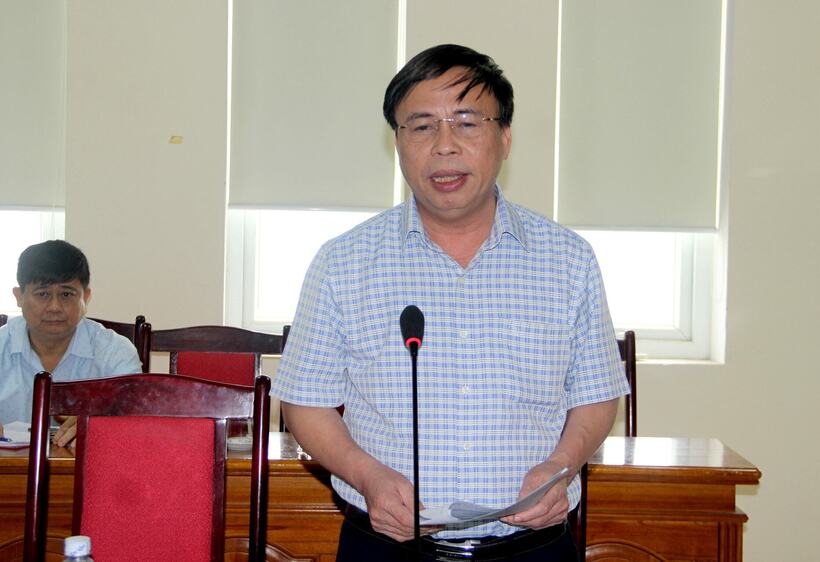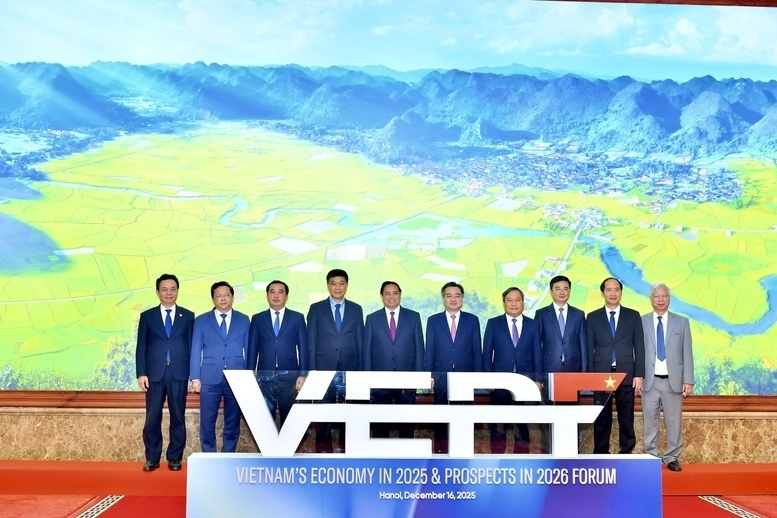
When sustainability is no longer optional for Vietnam’s textile firms
19:05 | 23/03/2025 11:18 | 17/12/2025Trade
Alongside support measures from central authorities, the province has allocated significant local resources to assist enterprises whose products are recognized. Such support is comprehensive, ranging from production investment to market expansion. Director of the Nghe An Department of Industry and Trade Pham Van Hoa spoke with Vietnam Economic News about the province’s approach.
Products that embody local identity
Q: The national voting for outstanding rural industrial products is underway. Could you share how many products Nghe An has entered this year, and what advantages they hold compared with previous editions?
Pham Van Hoa: In line with Official Dispatch No. 822/ĐCK-KC dated June 6, 2025, from the Department of Innovation, Green Transition and Rural Industry Promotion regarding registration for the 6th National Voting for Outstanding Rural Industrial Products, the Nghe An Department of Industry and Trade issued Dispatch No. 1631/SCT-PTCT on June 18, 2025, to register provincial entries. This year, Nghe An has nominated two distinctive products.

Director of the Nghe An Department of Industry and Trade Pham Van Hoa. Photo: Nghe An Newspaper.
The first is Luong Son brown rice crackers produced by Luong Son Food Production and Trading Co., Ltd. (Thuan Trung commune). The product is made from clean, high-nutrition ingredients unpolished brown rice rich in fiber, B vitamins, and minerals supporting digestion, cardiovascular health, and weight control.
Meeting modern consumer demand for safe and healthy foods, it embodies the “clean eating - healthy living” trend. While rooted in the province’s traditional rice cracker craft, the product introduces innovation in raw materials and production technology, offering differentiation from conventional white rice crackers. It has wide market potential, both as a daily food item and as a specialty gift, with prospects to penetrate export markets under the banner of “nutritious grains - green food”.
The second is Duc Tuan veal sausage (gio be), produced by Nam Nghia Duc Tuan Agricultural Processing Cooperative (Nam Dan commune). Compared with previous editions, the product has undergone a strong transformation in branding and market approach, with greater investment in packaging, design, and storytelling tied to Nghe An’s culinary heritage. While preserving authentic traditional flavors, it now applies modern preservation technology, enabling distribution through supermarkets and clean-food retail chains nationwide.
Q: Given the highly competitive nature of this national platform, what priorities and criteria has Nghe An set in selecting products for this year’s competition?
Pham Van Hoa: Recognizing the scale and competitiveness of this event, Nghe An has set clear priorities. First and foremost, products must ensure quality, safety, utility, and market competitiveness, while being produced with increasingly modern and eco-friendly technologies. Second, we prioritize products with high added value, leveraging local raw materials, embodying cultural identity, and demonstrating potential for large-scale commercialization and integration into supply chains. Third, design, packaging, and branding must reflect innovation and meet evolving consumer tastes.
We also pay attention to the broader impact, products should generate positive effects on rural economic development, create jobs, raise incomes, and contribute to building Nghe An’s industrial brand. For us, this is not merely a competition, but an opportunity to promote local products, strengthen their identity, and affirm their position in the market.
Comprehensive Support beyond the award
Q: Beyond symbolic recognition, what concrete support does Nghe An provide to enterprises whose products are recognized, and what results have been achieved?
Pham Van Hoa: Alongside honorary recognition, Nghe An has consistently implemented practical support programs for award-winning enterprises.
They are given priority to join trade promotion activities, fairs, and supply-demand matchmaking events, as well as to benefit from publicity campaigns across media platforms. Financial resources from industrial promotion funds and enterprise support programs are allocated to assist in upgrading technology, improving designs, enhancing quality, and expanding production.
The results are tangible, many of Nghe An’s award-winning rural industrial products have gradually built strong brands, expanded both domestic and export markets, and increased competitiveness. These developments have created new jobs, boosted rural incomes, and contributed to sustainable local economic growth.
Specifically, industrial promotion programs have so far supported 25 enterprises with award-winning products, with a total budget of VND 5.87 billion. Of this, provincial-level winners received VND 4.16 billion, regional-level winners VND 1.25 billion, and national-level winners VND 455 million.
Support measures covered labor training, advanced machinery adoption, technology transfer, technical demonstration models, and equipment for product display and promotion. Beneficiary enterprises have expanded investment, scaled up production, and increased workforce size, from dozens to hundreds of employees. Their revenues rose from VND 3-5 billion to over VND 20 billion annually, with many products entering export markets.
Strengths, limitations and future directions
Q: Having undergone several editions, what do you consider the strengths and limitations of the program and what recommendations would you make for more substantive impact?
Pham Van Hoa: Over multiple editions, the program has proven its value in identifying, honoring, and promoting distinctive products from across the country. Its greatest strength is that it has become a prestigious platform, encouraging enterprises to continuously innovate, upgrade technology, and enhance product quality. It has also strengthened supply-demand linkages, brand building, and market expansion.
That said, certain limitations remain. In some areas, post-award promotion and communication have not been sufficiently robust. Linkages between award-winning products and large-scale distribution networks remain limited. Small producers, in particular, often lack the resources to invest in technology for long-term development.
To enhance the program’s impact, several steps are essential: intensifying communication to ensure award-winning products reach both domestic and international consumers; expanding post-award support beyond symbolic recognition to include financing, technology transfer, trade promotion, and quality consulting; and establishing stronger linkages between recognized products and major retail and export networks.
At the same time, enterprises themselves must be proactive, improving management, embracing innovation and positioning their products as drivers of sustainable rural industrial development.
Q: Thanh you for your insight!

19:05 | 23/03/2025 11:18 | 17/12/2025Trade

19:05 | 23/03/2025 11:17 | 17/12/2025Trade

19:05 | 23/03/2025 09:50 | 17/12/2025Trade

19:05 | 23/03/2025 20:46 | 16/12/2025Industry

19:05 | 23/03/2025 20:41 | 16/12/2025News and Events